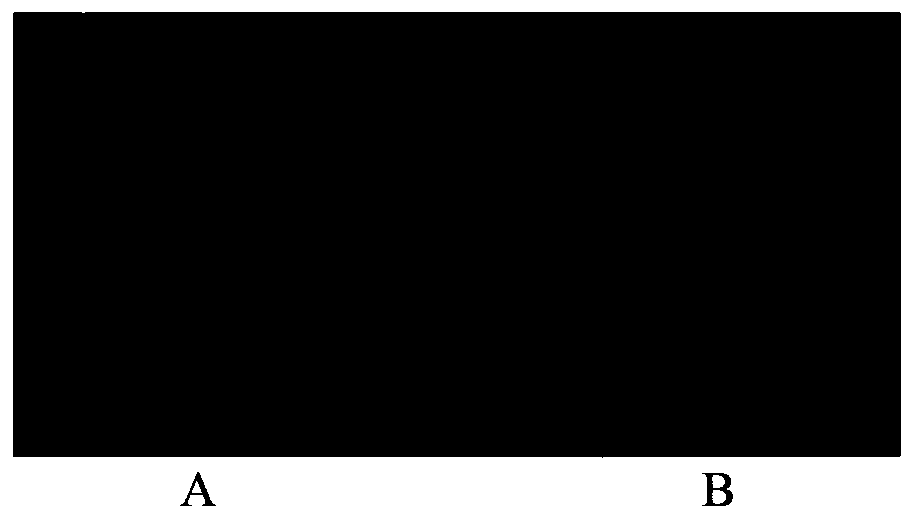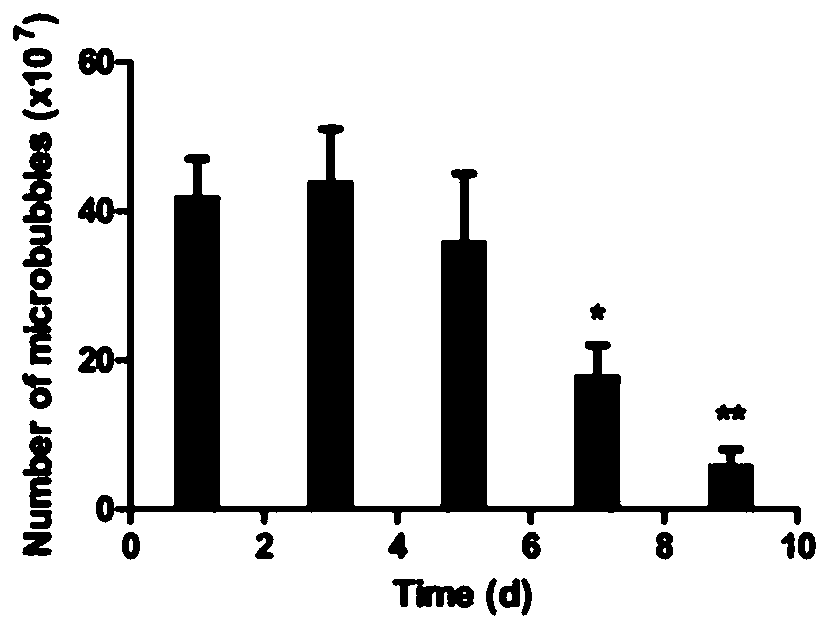Method for preparing sPD1-loaded microbubbles targeting CD133 and application thereof in preparing drugs for inhibiting cervical cancer
A microbubble, targeted technology, applied in the field of lipid microbubbles, can solve the problems of obvious systemic side effects, easy generation of drug resistance, and difficult treatment.
- Summary
- Abstract
- Description
- Claims
- Application Information
AI Technical Summary
Problems solved by technology
Method used
Image
Examples
Embodiment 1
[0034] Preparation and Characterization of Microbubbles Carrying sPD1 Targeting CD133
[0035]1) Distearoylphosphatidylcholine (DSPC), distearoylphosphatidylethanolamine-polyethylene glycol 2000 (DSPE-PEG2000), distearoylphosphatidylethanolamine-polyethylene glycol 2000-biotin (DSPE-PEG2000-Biotin), stearic acid-polyethylimide (PEI-600) were mixed in a glass test tube at a molar ratio of 85:5:5:5, shaken gently, mixed well, and preheated in a 60°C water bath After heating, place the glass test tube on a vortex shaker and rinse with N 2 Blow the liquid in the glass test tube and vortex while blowing to form a homogeneous film at the bottom of the glass tube wall.
[0036] 2) Connect the glass tube after film formation to a vacuum pump, and vacuum for 3 hours to fully volatilize the liquid.
[0037] 3) After taking out the glass test tube, add 5ml of Tris buffer solution to it, put it in an ultrasonic cleaner for 5 minutes in a water bath, so that the film on the glass tube wa...
Embodiment 2
[0053] Application of microbubbles carrying sPD1 targeting CD133 in the preparation of drugs for inhibiting cervical cancer
[0054] Establishment of subcutaneous xenograft tumor model of U14 cervical cancer in mice
[0055] Ten days after the U14 cells were inoculated in the right anterior armpit of the mice, tumors were formed, most of which were round, with a diameter of about 7 cm, and a few were irregular. 50 mice were used in the experiment, and 45 mice were successfully modeled, with a tumor formation rate of 90%. The mice were growing well, and no abnormal death was found. The model mice were randomly divided into five groups, with 9 mice in each group.
[0056] Inhibitory effect of ultrasound combined with targeted gene-loaded microbubbles on cervical cancer in mice
[0057] Tumor inhibition rate of mice in each group
[0058] The mouse developed a bulging mass in the right armpit. Tumor tissues excised from the axilla of mice were nodular, slightly firm in textu...
PUM
 Login to View More
Login to View More Abstract
Description
Claims
Application Information
 Login to View More
Login to View More - R&D
- Intellectual Property
- Life Sciences
- Materials
- Tech Scout
- Unparalleled Data Quality
- Higher Quality Content
- 60% Fewer Hallucinations
Browse by: Latest US Patents, China's latest patents, Technical Efficacy Thesaurus, Application Domain, Technology Topic, Popular Technical Reports.
© 2025 PatSnap. All rights reserved.Legal|Privacy policy|Modern Slavery Act Transparency Statement|Sitemap|About US| Contact US: help@patsnap.com



